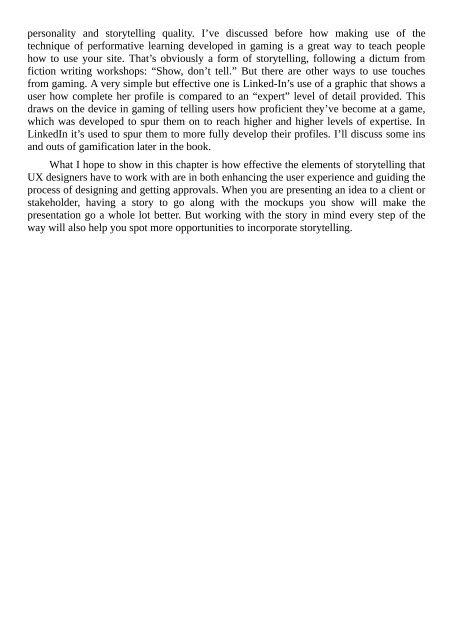Create successful ePaper yourself
Turn your PDF publications into a flip-book with our unique Google optimized e-Paper software.
personality and storytelling quality. I’ve discussed before how making use of the<br />
technique of performative learning developed in gaming is a great way to teach people<br />
how to use your site. That’s obviously a form of storytelling, following a dictum from<br />
fiction writing workshops: “Show, don’t tell.” But there are other ways to use touches<br />
from gaming. A very simple but effective one is Linked-In’s use of a graphic that shows a<br />
user how complete her profile is compared to an “expert” level of detail provided. This<br />
draws on the device in gaming of telling users how proficient they’ve become at a game,<br />
which was developed to spur them on to reach higher and higher levels of expertise. In<br />
LinkedIn it’s used to spur them to more fully develop their profiles. I’ll discuss some ins<br />
and outs of gamification later in the book.<br />
What I hope to show in this chapter is how effective the elements of storytelling that<br />
UX designers have to work with are in both enhancing the user experience and guiding the<br />
process of designing and getting approvals. When you are presenting an idea to a client or<br />
stakeholder, having a story to go along with the mockups you show will make the<br />
presentation go a whole lot better. But working with the story in mind every step of the<br />
way will also help you spot more opportunities to incorporate storytelling.


